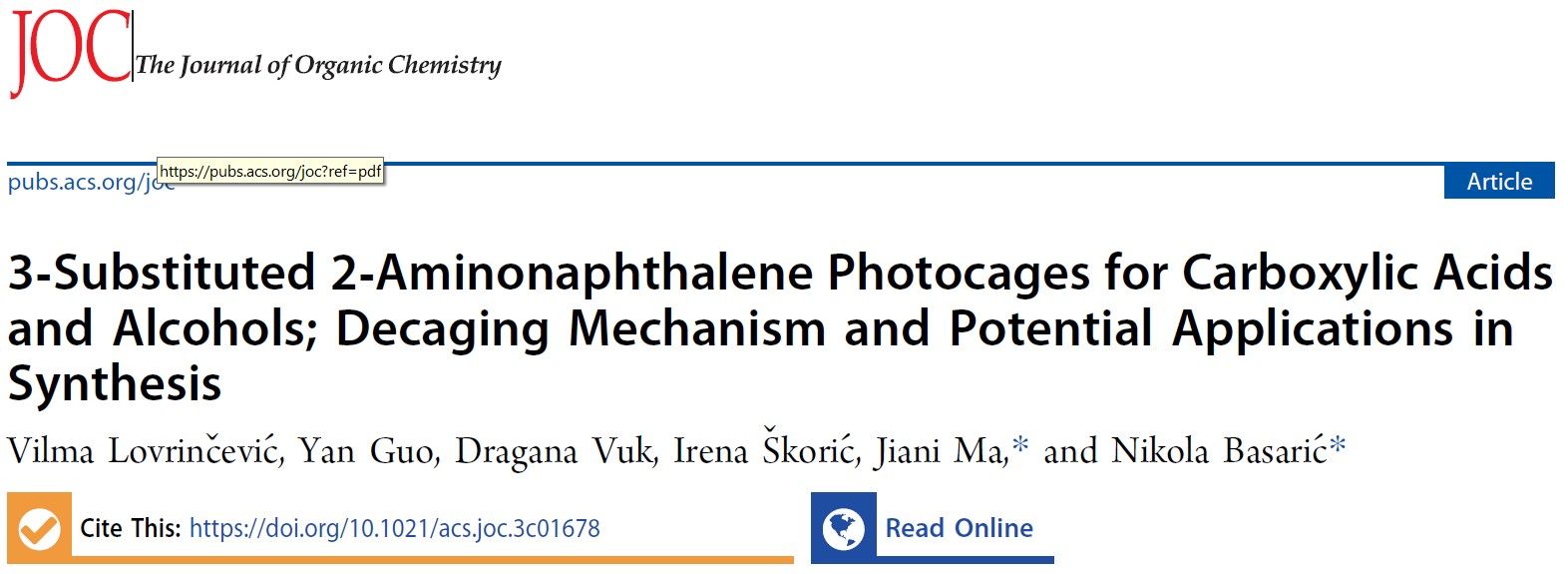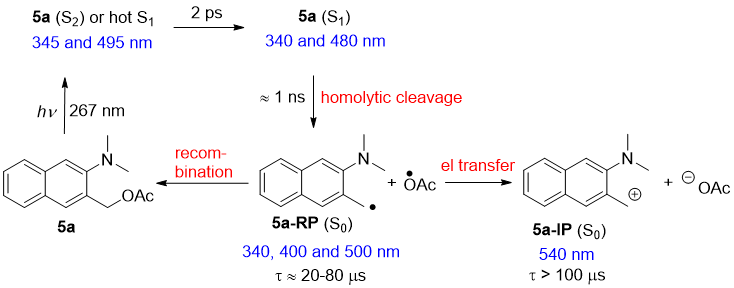
Vilma Lovrinčević, Yan Guo, Dragana Vuk, Irena Škorić, Jiani Ma*, and Nikola Basarić*. J. Org. Chem., 2023, 88, 15176-15188.
Photocages control the release of active molecules with the advantages of real-time, in situ, precise and rapid, and are widely used in biology to activate different biological molecules or regulate biological processes. Therefore, there is an urgent need to develop novel photocages with superior physiological stability and photochemical reactivity.
In a previous study, we developed N, N-dimethylaminonaphthalene photocages which absorb at near-visible region and can be used together with anilines for chromo-orthogonal deprotection. However, this type of photocages suffered from the low quantum yield of photodeprotection, and the photodeprotection reaction mechanism is still unclear.

Scheme 1. Probable photochemical reaction mechanism for decaging of 5a.
To address the above problems, we report the synthesis and investigation of the photochemical reactivity and mechanism for new photocages that are derivatives of 3-substituted-2-aminonaphthalenes. Their performance is better compared to the published aminonaphthalenes, as the decaging proceeds with ten times higher efficiency. The photochemical experiments demonstrated potential applications of 3-substituted-2-aminonaphthalenes photocage in biomedicine as we managed to photorelease nonsteroidal anti-inflammatory drugs ibuprofen and ketoprofen. The decaging photochemical reaction mechanism was investigated experimentally by transient absorption techniques with time scales from femtoseconds to seconds and computationally on the TD-DFT level of theory. The photoelimination of carboxylates takes place directly in the singlet excited state by a homolytic cleavage producing a radical pair within 1 ns. The subsequent electron transfer gives rise to aminonaphthalene carbocation and the carboxylate (Scheme 1). A wide scope of substrates that can be decaged relatively efficiently with near-visible light and the chromo-orthogonal compatibility of aminonaphthalene and aniline derivatives render these photocages potentially applicable in organic synthesis or biology.
First Author: Vilma Lovrinčević, University of Zagreb
Corresponding Authors: Prof. Ma Jiani, Shaanxi Normal University; Prof. Nikola Basarić, Ruđer Bošković Institute
Full Text Link: https://doi.org/10.1021/acs.joc.3c01678
 Latest Updates
Latest Updates






